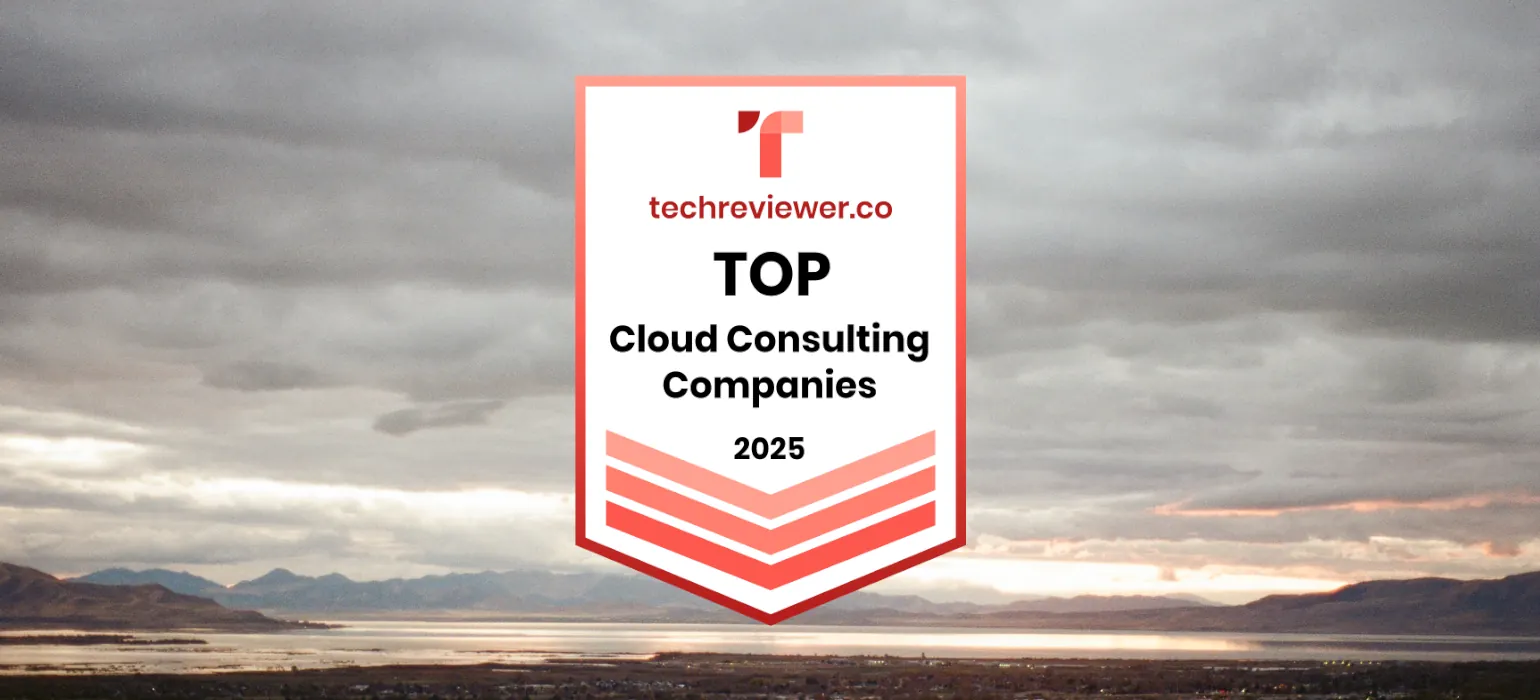End Point Is a Top Cloud Consulting Company on Techreviewer

We recently received some good news: Techreviewer.co included us in their list of top cloud migration consulting companies for 2025! While we don’t usually dwell on rankings, it’s always rewarding when thoughtful, steady work over many years gets noticed.
Cloud adoption has been a major part of our engineering efforts since it became “a thing”: For many of our clients, moving to the cloud isn’t just a technology upgrade, but a strategic shift that affects performance, costs, security, and long-term maintainability. Helping organizations navigate that transition in a careful and grounded way is something we’ve been doing since long before “cloud migration” became a buzzword.
Our approach to cloud migration
At End Point Dev, we’ve always taken a pragmatic path: understand the real constraints, design strong systems that will age well, and keep things secure and predictable. Cloud work touches many layers, and affects DevOps, databases, applications, and ongoing operations. Our team of software engineering and infrastructure experts supports our clients through that entire lifecycle.
Our day-to-day cloud work includes, but is not limited to:
- Planning and executing …
cloud consulting
Using ActiveSupport::ExecutionContext to improve Rails logging

If you’ve ever tried to debug a complex user workflow in a modern Rails application, you know how difficult it can be. A single web request can spawn multiple background jobs, Turbo Stream updates, and a flurry of database queries. Answering the question “What was this user doing?” should be simple, but tracing the flow of events through a web of log files can be difficult and time consuming.
You can add custom log tags but that gets tedious and messy fast. Fortunately, Rails has a powerful, under-documented feature designed specifically to address this problem: ActiveSupport::ExecutionContext.
In this post, we’ll walk through what ExecutionContext is and how you can use it to add meaningful structure to your logs, making debugging a much more straightforward task.
The Problem: A Tangled Web of Logs
Imagine a user places an order on your site. The OrdersController#create action fires, which then enqueues a ReceiptJob and an InventoryUpdateJob. The controller also renders a Turbo Stream to update the UI. You have at least four separate units of work: the HTTP request and three background tasks.
Now, if the InventoryUpdateJob fails, your log might show an …
rails logging
Build a Smarter Telegram Bot: Integrating a RAG Pipeline for FAQ Answering

In this post, we will show you how to build an intelligent FAQ bot using Python and the Telegram Bot API. We’ll go beyond simple commands by integrating a Retrieval-Augmented Generation (RAG) pipeline with LangChain.
This RAG pipeline lets our bot pull information from a custom knowledge base (in our case, a simple faqs.json file) and use a local Large Language Model (LLM) through Ollama to generate accurate answers. The best part? This approach (which works great with interfaces like Open WebUI) gives you full control over your models and data with zero API costs.
What is Telegram?
You’ve probably heard of Telegram—it’s a popular, cloud-based instant messaging app. It’s fast, works everywhere (mobile, web, and desktop), and has powerful features like huge group chats and easy file sharing.
One of its most powerful features for developers is the Telegram Bot API, an open platform that allows anyone to build and integrate automated applications (like ours!) directly into the chat interface.
A Warning on Privacy and Encryption
Before we build our bot, it is critical to understand how Telegram handles encryption, as it directly impacts user privacy.
- Cloud Chats …
python rag langchain programming artificial-intelligence
Migrating from Legacy Networking to systemd-networkd on Ubuntu 24.04

During a recent Ubuntu server upgrade, I migrated a production system from the legacy ifupdown networking stack to the modern systemd-networkd service. This migration was part of preparing several remote production servers for a smooth upgrade to Ubuntu 24.04, which relies heavily on systemd-managed components.
In this post, I’ll walk through the full migration process, how we automated it safely across multiple remote servers, and the lessons learned from implementing rollback and watchdog mechanisms for zero-downtime transitions.
Why migrate to systemd-networkd?
Ubuntu 24.04 uses systemd-networkd as the default backend for network management. The traditional ifupdown scripts (/etc/network/interfaces) are no longer the recommended way to configure networking. Some of the modern features enabled by systemd-networkd include:
- Predictable network interface naming (e.g., ens3, eth0, etc.)
- Built-in support for bridges, VLANs, and bonds
- Faster boot times with asynchronous network handling
- Unified configuration under /etc/systemd/network
Migrating now also avoids future compatibility issues and takes advantage of systemd’s integrated logging and management.
Step 1: Check the current …
ubuntu systemd Networking linux migration devops
Adventures in Vibe-Coding with Replit

A few weeks back, I tried out Replit Agent to see how viable it is as a development tool. I built two apps from scratch, which took 10–15 hours total, with a decent amount of human input along the way to clarify the agent’s questions.
Project 1: Multi-LLM code review API
The idea for the first project was to have a multi-LLM code review app, where you would pass a repository on GitHub or locally to an API, and it would run several full-repo code reviews, ranking and deduplicating them before returning a response. This setup should allow me to have a web frontend or CLI without much added complexity.
The prompt
Please build an app based on this app specification: app_spec.yaml (460 lines)The results
After much back and forth (and about 40 agent-generated Git commits), I got this message:
🎉 SUCCESS! The Multi-LLM Code Review Assistant is now fully working!Well, I actually got this message several times after sending just about any command to the agent. It’s very excited about its own work, even when it doesn’t work! In this case, the API connections were working, and testing with curl gave output, but I couldn’t get it to give more than one code review …
artificial-intelligence end-point-ecommerce ecommerce
A Preact Web App Without npm Build

Modern JavaScript frameworks such as React and Preact usually require a full “build pipeline” with Node.js, npm, and bundlers like Webpack or Vite. That’s fine for large web apps, but sometimes you just need a small, self-contained browser interface inside a project that isn’t mainly about the web — say, a Java program that processes transit data and simply needs a page to display results.
This post explores how to use Preact and its companion library @preact/signals without any npm build process at all. By taking advantage of browser-native import maps and writing a bit of code directly in JavaScript instead of JSX, it shows how to build a lightweight, modern UI that runs straight from static HTML, CSS, and JS files — no build tools required.
The Scenario
This might look like a strange problem to solve but sometimes the web UI part just isn’t a main character in your project.
For instance, I have a GTFS data processor whose main goal is to preprocess public transport stop timetables. It’s written in Java and I want a simple browser UI to check its output. So I want the web UI part of the project to be just static HTML, CSS, and JavaScript files.
I also don’t want to run npm or …
nodejs javascript
Creating Agentic AI Applications

Photo by Steve Johnson on Pexels
In the rapidly evolving world of AI, agentic AI is emerging as a game-changer. These systems go beyond simple chatbots or predictive models: they’re designed to act autonomously, make decisions, and interact with the real world to accomplish goals. In this blog post, we’ll dive into what agents are, explore agentic applications and orchestration, and walk through how to build your own agentic applications with open-source examples.
What Are Agents?
AI agents are autonomous entities that can perceive their environment, reason about it, and take actions to achieve specific objectives. Think of an AI agent as more than just a chatbot, it’s like a digital teammate that can look around, make decisions, and take action on its own. Unlike traditional AI models that respond passively to inputs, agents are proactive: they can break down goals into sub-tasks, use tools (like APIs or databases), maintain memory across interactions, and adapt based on feedback. This makes AI agents ideal for applications requiring independence, such as automation, research, or problem-solving.
At their core, agents typically integrate large language models (LLMs) …
artificial-intelligence
.NET 10 is Coming: What's New, and Why It Matters

Microsoft has everything almost ready for the upcoming release of .NET 10 in November this year, and it promises to be a major milestone for developers. Currently in beta, the previews released so far have shown improvements in performance, security, compatibility, and more. Let’s take a look and what’s coming, and why it matters.
Performance and runtime improvements
One of the core aspects of .NET 10 will be the improved efficiency in different areas. To mention a few of them:
- Optimized compression streams such as
GZipStreamand async implementations forZipArchivemethods - Devirtualization improvements for interface methods, especially when arrays are involved, resulting in faster code execution
- Faster stack allocation for objects through the expanded use of scape analysis
All of these features (and others) contribute to lower latency and more efficient resource usage. There is a comprehensive blog post by Stephen Toub, .NET team developer, where he runs several benchmarks proving how these improvements result in faster responses and smaller allocations.
Security and increased cryptographic support
.NET 10 also introduces enhancements to encryption and …
dotnet csharp






